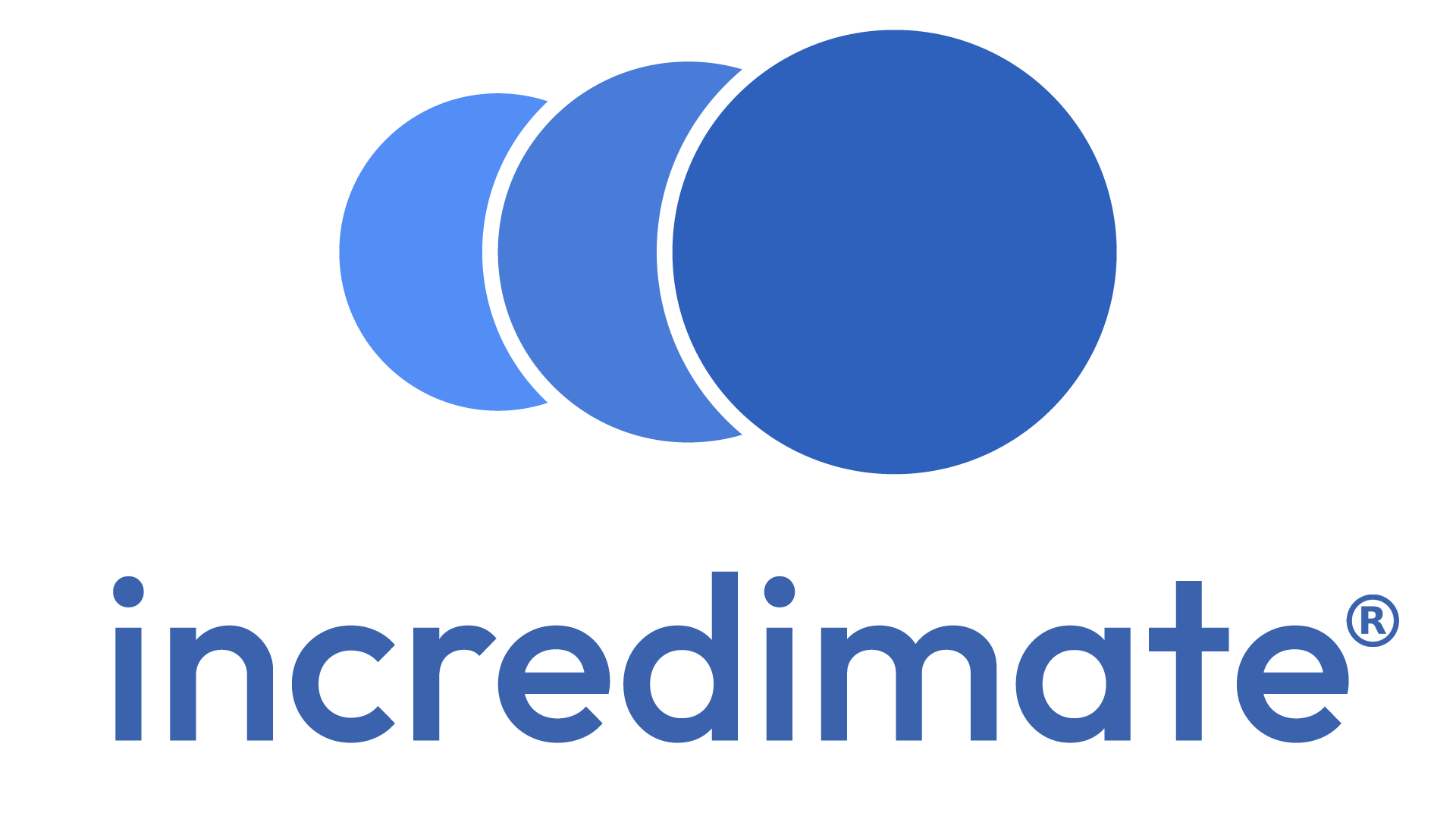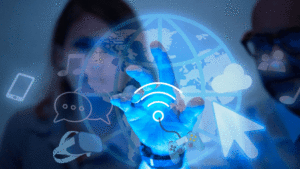The fact that you can read this blog showcases that you are a participant in the modern Web. The Web we encounter today has come a long way from 20 years ago. If we’ve learned anything from history, it is that changes are inevitable, and they can completely revolutionize the world.
The Internet evolved from web1, akin to a medieval portrait, to web2, comparable to profile pictures, and now to web3, analogous to VR avatars.
This blog will discuss how the world wide web has evolved over the years and where it is heading.
WEB 1.0: THE BIRTH OF THE INTERNET
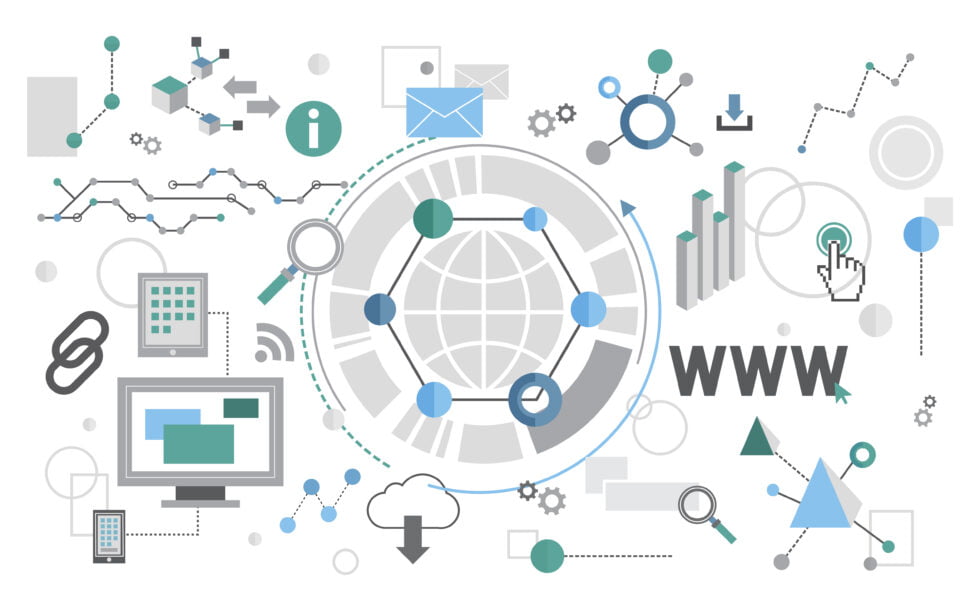
Web 1.0 was the original version of the Internet. Most participants were content consumers, whereas the creators were developers who built websites that delivered material primarily in text or graphic format. It existed from roughly 1991 until 2004.
These sites served static material rather than dynamic HTML. Data and content were supplied from a static file system instead of a database, and there was little interactivity on the web pages.
Berners-Lee had built the three key technologies that became the core of the Web by October 1990, including the first web page editor/browser (WorldWideWeb.app):
URI or URL: Uniform Resource Identifier (URI) is a distinct address used to identify each web resource.
HTML: HyperText Markup Language (HTML) is the markup or formatting language used on the Internet.
HTTP: The HyperText Transfer Protocol (HTTP) enables the retrieval of linked materials from the Internet.
The introduction of web browsers such as Netscape Navigator in the mid-1990s ushered in the age of Web 1.0. This was the era of static web pages retrieved from servers, a long cry from the sleek material we now take for granted. Most internet users were enthralled by the novelty of capabilities like email and real-time news retrieval at the time. Content production was still in its early stages, and customers had few options for interactive apps. However, this changed as online banking and trade became more popular.
WEB 2.0: THE EXPLOSION OF INTERNET ACCESS

Most of us have encountered the Web in its current incarnation, often known as web2. Consider web2 to be the interactive and social Web.
Web 2.0 refers to a paradigm shift in how people utilize the Internet. Web 2.0’s interactivity, social networking, and user-generated content have supplanted the sterile web pages of Web 1.0 over the last 15 to 20 years. Web 2.0 allows user-generated material to be viewed by millions of people all over the world in an instant; this unprecedented reach has resulted in an explosion of this form of content in recent years.
You can be a developer to participate in the creative process of the web2 world. Most apps are built in a way that allows anyone, regardless of their skills, to be a creator.
People consider Web2 very simple, which allows more individuals to connect and become creators. Although the current form of the Web is hellacious, it is possible to bring much more to it.
Key breakthroughs such as mobile internet access and social networks, as well as the near-ubiquity of sophisticated mobile devices like iPhones and Android-powered smartphones, have fueled the exponential growth of Web 2.0. These advancements enabled the rise of apps, which significantly increased online engagement and utility during the second decade of this millennium. Examples of such apps include Airbnb, Facebook, Instagram, TikTok, Twitter, Uber, WhatsApp, and YouTube, among others.
WEB 3.0: THE BIG EVOLUTIONARY LEAP

Now you must be wondering, “what is web 3?” Although there is no clear definition of Web 3.0, it does have numerous unique qualities. Albeit a few distinctions between web2 and web3, decentralization lies at the heart of both. Web3 developers often do not create and deploy apps on a single server. Instead, they run on blockchains, decentralized networks of many peer-to-peer nodes. Learn more about blockchains here.
KEY FEATURES

Decentralization is a key principle of Web 3.0. In Web 2.0, computers use HTTP as separate web addresses to search for data held at a fixed location, often on a single server. Information might be kept in multiple locations simultaneously and become decentralized with Web 3.0 since it would be found based on its content rather than a single location. This would offer people more control by destroying the massive databases that internet behemoths like Meta and Google maintain.
Users can sell their data through decentralized data networks with Web 3.0, ensuring they retain full control. This information will be generated by a wide range of sophisticated computing resources, including mobile phones, desktop computers, appliances, cars, and sensors.
Decentralization and open-source software-based Web 3.0 will also be trustless and permissionless. This means that Web 3.0 applications, also known as dApps, will run on blockchains, decentralized peer-to-peer networks, or a hybrid. DApps are decentralized programs.
Artificial intelligence (AI) and machine learning: With the help of the Semantic Web and natural language processing-based technologies, Web 3.0 will enable machines to comprehend information similarly to humans. Web 3 will also use machine learning, a subset of artificial intelligence (AI) that mimics human learning by using data and algorithms, gradually improving its accuracy. Instead of just targeted advertising, which makes up most of present efforts, these capabilities will result in faster and more relevant outcomes in various fields like medical development and new materials.

THE LAYERS OF WEB 3
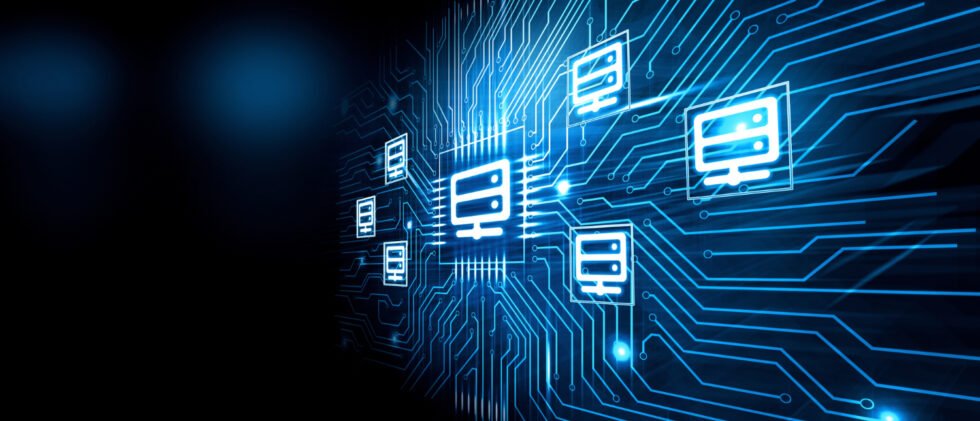
Web 3 can be deconstructed into four basic layers. Let us take a look at these four new layers of technological innovation that are propelling Web 3:
Edge Computing – Whereas web 2.0 altered already commoditized personal computer technology in data centers, web 3 moves the data center to the edge and into our hands.
Decentralized Data Network – Because data is decentralized, users will own their data in web 3. Using decentralized data networks, different data generators can sell or share their data without losing ownership or relying on intermediaries.
Artificial Intelligence and Machine Learning – Algorithms for artificial intelligence and machine learning have improved to the point where they can now make useful and, in some cases, life-saving predictions and actions.
Blockchain – Blockchain is a decentralized system that executes transactions through smart contracts. These smart contracts define the semantics of a web 3 application. As a result, anyone wishing to create a blockchain application must employ the shared state machine.
WHAT ARE THE BENEFITS OF WEB 3?

Web 3 restores the human element by giving consumers privacy and security rather than making companies more powerful than ever. In the previous 7-8 years, the idea of Web 3 has shifted. It was straightforward initially, but with the arrival of blockchain and bitcoin, the vision and approach have drastically changed. Web 3 now focuses more on the decentralized features of the blockchain.
SECURE NETWORK:
Web 3 will have more security features than its predecessors. This is enabled by two factors: dispersed nature and decentralization. Hackers and exploiters will have a difficult time breaking into the network. Furthermore, their operations may be tracked and retracted inside the network if they are capable. Without centralization, hackers will find it difficult to gain complete company control.
PRO-PRIVACY AND ANTI-MONOPOLY:
Web 3 will introduce a network topology that is pro-privacy and anti-monopoly. It will not encourage the use of centralized systems. In short, we will witness a 180-degree turn with privacy and decentralization as the primary themes. The middleman will have no business or need for such a platform.
OWNERSHIP OF DATA:
Web 3 will be easy to trust for users. Until recently, large organizations held and used the data created by users. End users will have complete data ownership with Web 3 features. The data transmitted over the network will be encrypted.
NO SERVICE INTERRUPTIONS:
Service interruptions are less likely in distributed systems. Because there is no cent mhjmghm vghmvgmvgralized organization for operation, it is difficult for distributed denial of service (DDoS) or other forms of service breakdown to have an influence. As a result, Web 3 is an excellent area to transfer data and vital services without fear of service disruption.
n k l vn mncnlkfolwkbngdk vmv n
Web 3 will also host semantic web properties. The semantic Web is an advancement over the previous Web 2.0 technologies. Data can be transferred across numerous systems, platforms, and community boundaries because of it. It will serve as a link between various data formats and systems.
WHAT IS THE POTENTIAL OF WEB3?

The distributed ledger technology and smart contracts gave Web3 its decentralized nature. Due to this nature, Web3 is destined to produce sustainable results. It will lower the costs by eliminating mediators, arbitration, and manual mediation.
A PERSONALIZED BROWSING PROCESS
There’s no questioning the convenience of swiftly clicking through to a specific deal for something you genuinely need or want and would have missed otherwise, regardless of how intrusive such commercials can sometimes be.
ENHANCED SEARCH
As previously said, employing a search engine in natural language is extremely beneficial. The advantages extend far beyond the customer, as the learning curve disappears. Businesses are increasingly able to optimize their websites for search engines in a more organic way rather than employing complex keyword tactics.
MORE ADVANCED APPLICATION INTERFACES
The multidimensional Web 3 will benefit more than just websites; it will also allow web apps to give significantly richer experiences to consumers. Consider Google Maps, which can now include route planning, lodging recommendations, and real-time traffic updates in addition to the basics of location search. Simply put, this was not possible in the Web 2.0 era.
IMPROVE USER ENGAGEMENT
Web 3 can provide users with significantly greater usefulness, going far beyond the bulk of Web 2.0 apps customers utilize, such as social media, streaming, and online shopping. Semantic Web, AI, and machine learning capabilities, which are at the heart of Web 3, have the potential to expand applications in new domains dramatically and vastly improve user engagement.
THE PITFALLS OF WEB 3

Every breakthrough in the world has had some pitfalls, leading to a better version of it. Let us look at a few pitfalls for which Web3 may require more.
- To make technology more available to people worldwide, the capabilities and features of gadgets must be expanded.
- When web 3 is completely implemented on the Internet, any websites developed using web 1.0 technology will become obsolete.
- Web 3 technology is smarter, more efficient, and more accessible than prior generations. However, the technology still needs to be ready for widespread use.
- Because of web 3’s increased access to a user’s information and less privacy, reputation management will be more crucial than ever.
THE APPLICATIONS OF WEB 3

Web 3, with blockchain at its foundation, enables an expanding spectrum of new applications and services. Some of web3 examples and applications include:
- Metaverse: The metaverse is intended to be a more immersive, social, and enduring version of the Internet that we all know and love. It will entice us with technologies such as virtual reality (VR)and augmented reality (AR), allowing us to interact with the digital world more naturally and engagingly. The metaverse can be viewed as the interface via which humans interact with web 3 tools and applications.
- DeFi: Decentralised blockchain technology is being used as the foundation for decentralized finance (DeFi), a novel use case for Web 3 that allows financial services to be provided without the limits of traditional centralized banking infrastructure.
- NFTs: Non-fungible Tokens (NFTs) are one-of-a-kind tokens stored in a blockchain with a cryptographic hash.
- DAOs: DAOs are positioned to serve as the governing bodies of Web 3, providing some structure and decentralized governance.
- Decentralized applications (dApps): Decentralised applications (dApps) are programs that operate programmatically and are recorded in an immutable ledger. They are built on the blockchain and use smart contracts to make service delivery more efficient.
- Cryptocurrency: Web 3 apps such as cryptocurrencies such as Bitcoin are creating a new world of money that aspires to be distinct from the traditional world of fiat cash.
- Chain-crossing bridges: There are several blockchains in the Web 3 era, and cross-chain bridges allow connectivity between them.
IS WEB 3 THE FUTURE?

The world is moving toward an Internet where consumers have complete control over their data and privacy while simultaneously allowing businesses to profit from it (or not). Blockchain technology will make all of this possible.
As a result, web 3 will accelerate the fair and transparent use of user data, including everything from tailored search results to cross-platform development tools and 3D graphics. In the coming years, the Internet will grow more immersive and entertaining.
We can expect the following from web3:
- All transactions will be tracked on a distributed ledger that uses blockchain technology, and data transfers will be decentralized.
- Smart contracts open to everyone will relieve people of the need to rely on a centralized organization (like a bank) to maintain data integrity.
- The entertainment sector will significantly increase its revenue from the metaverse.
- Blockchain technology will make it possible for consumers to instantly produce digital goods and non-fungible tokens (NFTs), protecting intellectual property and personally identifiable information (PII).
- User data will be able to be profited from.
LOGGING OUT

The Internet has evolved dramatically. It evolved from where the government shared information to where people spent more than 70% of their time. What was once a database for recording information has evolved into a platform for providing updates and communicating with millions of people online.
We are currently midway between Web 2.0 and Web 3, and the exact design of the future Web is still being determined
